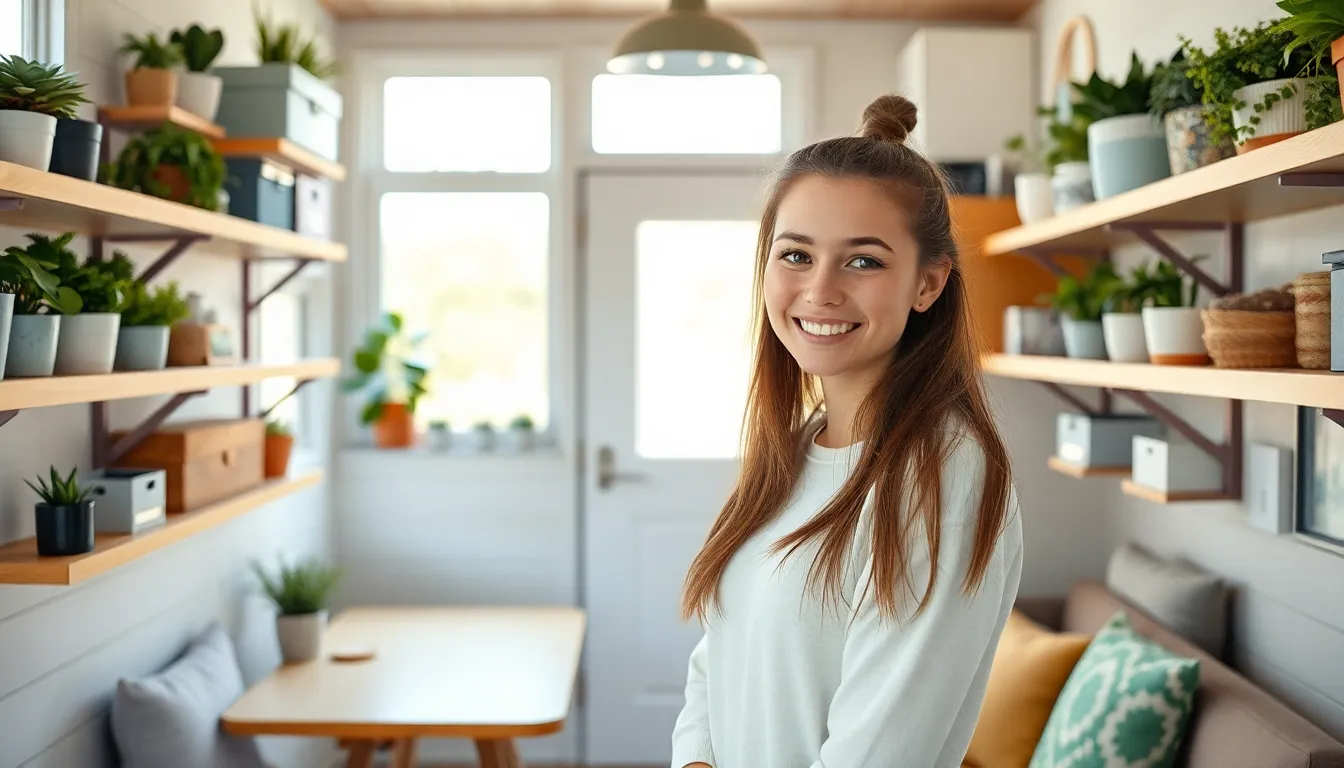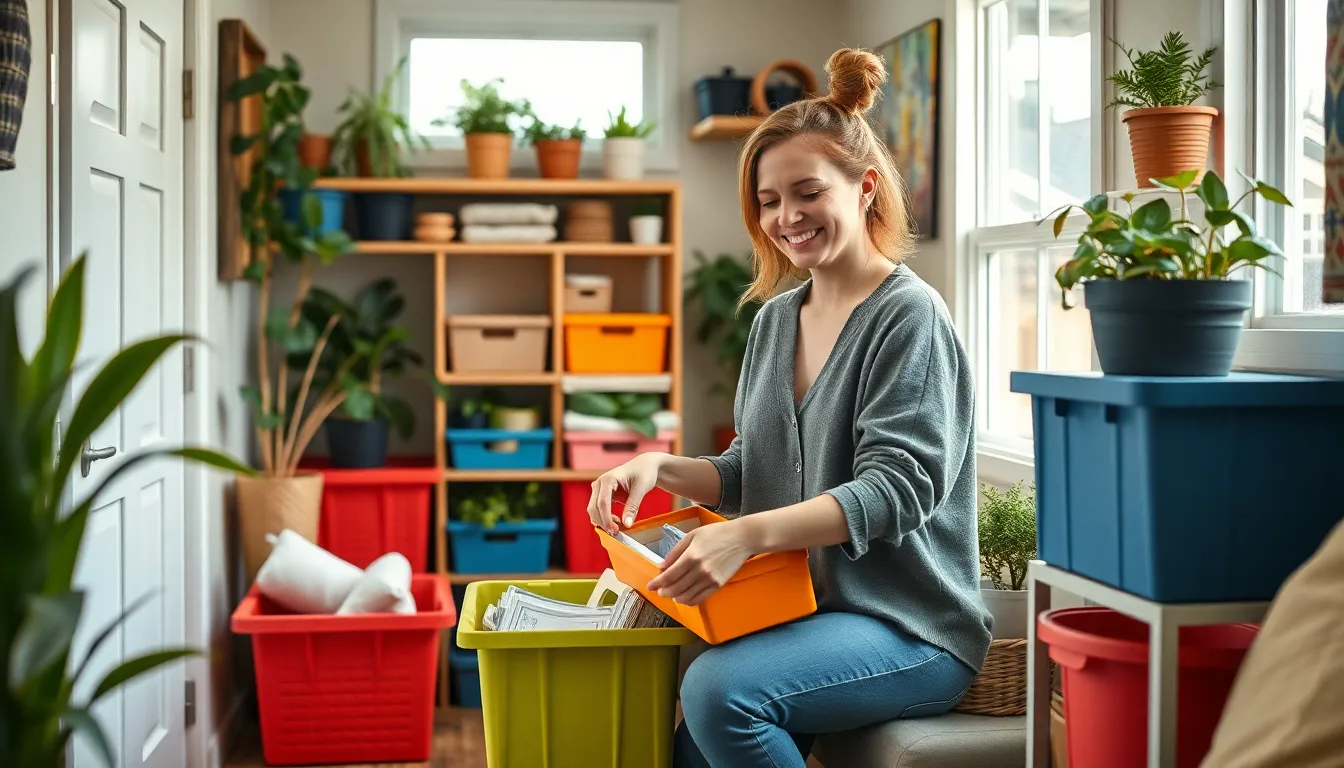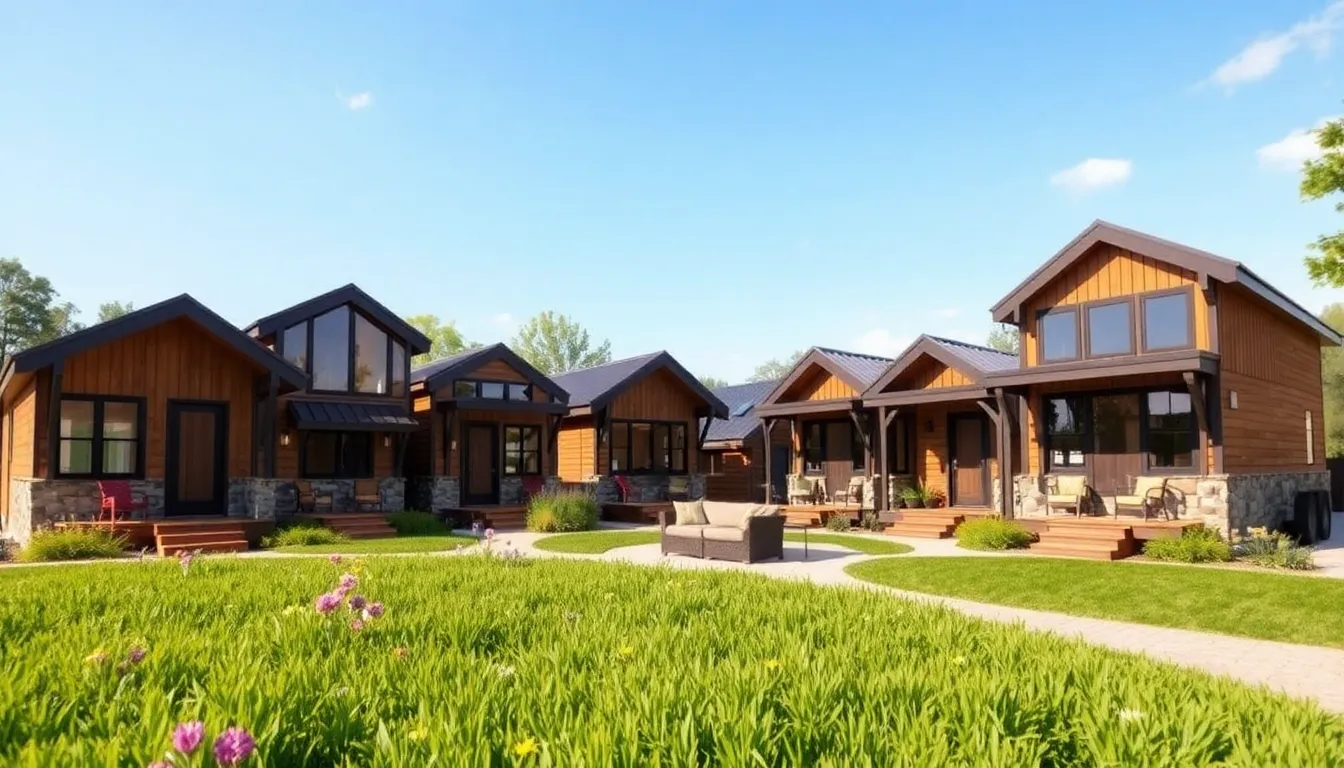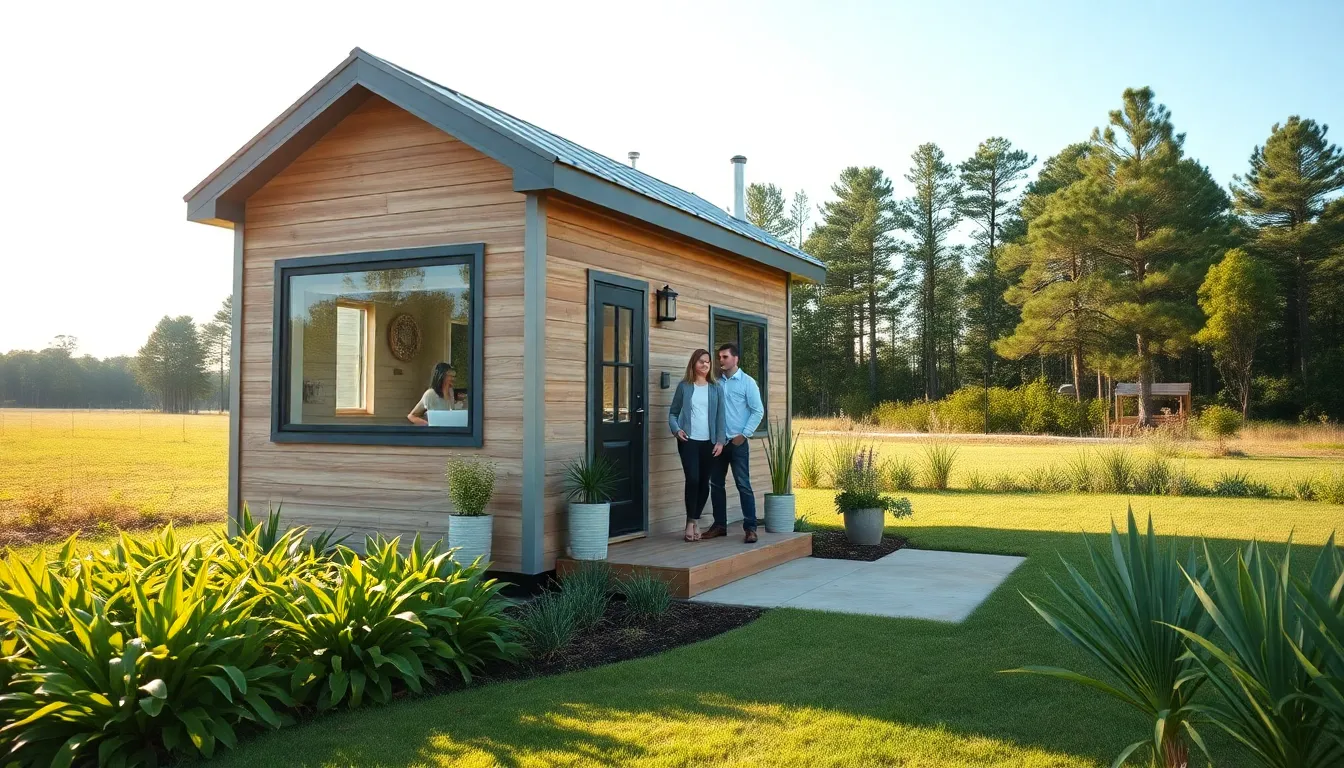Living in a tiny home can feel like a delightful adventure, but it often comes with the challenge of limited space. Imagine trying to fit a giraffe into a Volkswagen Beetle—it’s a tight squeeze, to say the least. Decluttering isn’t just a suggestion; it’s a necessity for anyone wanting to thrive in their cozy quarters.
Embracing a minimalist lifestyle can transform chaos into calm. By letting go of unnecessary items, one can create a serene sanctuary that feels spacious and inviting. Plus, who wouldn’t want to turn their tiny home into a stylish haven rather than a cluttered cave? Dive into the art of decluttering and discover how a little organization can lead to a lot more joy in your tiny space.
Table of Contents
ToggleUnderstanding Decluttering for Tiny Home
Decluttering holds significant importance for tiny home living. Simplifying spaces enhances comfort and functionality.
Importance of Decluttering
Maximizing limited space is essential. By reducing excess belongings, individuals create a more organized environment. Clarity comes from minimalism, allowing for easier navigation within tiny homes. Excess items can lead to chaos and stress. Eliminating the unnecessary fosters a sense of tranquility and encourages intentional living. The act of decluttering itself can feel liberating, providing mental clarity. Prioritizing meaningful possessions cultivates a harmonious atmosphere.
Benefits of Living in a Tiny Home
Living in a tiny home leads to substantial financial savings. Reduced mortgage and utility costs lighten financial burdens. A smaller footprint promotes environmental sustainability, contributing to a healthier planet. Less maintenance time means more opportunities for enjoyable activities. Community and connection often flourish in tight-knit spaces. Simplicity encourages a focus on experiences rather than material goods. Emotional well-being improves through intentional choices, leading to happier lives.
Strategies for Effective Decluttering
Effective decluttering transforms tiny spaces into organized havens. Utilizing specific strategies can streamline the process, ensuring every item serves a purpose.
Assessing Your Space
Assessing space begins with measuring dimensions. Understanding available square footage helps in visualizing potential layouts. Identify areas that serve as storage, work, or living zones. Observing traffic flow reveals items that obstruct movement. Creating designated zones enhances functionality. Each section can accommodate essential belongings, promoting order. Consider natural light sources to elevate the ambiance, making spaces feel more inviting.
Deciding What to Keep or Discard
Deciding what to keep or discard calls for honest reflection. Start with a timeline, like the past year, to determine necessity. A checklist categorizes items into essentials and non-essentials. Evaluate emotional attachments, recognizing items that spark joy. Prioritize multifunctional belongings, such as furniture with storage options. Donate or sell items that no longer serve a purpose, benefiting others in the process. Implementing the “one in, one out” rule controls future acquisitions. This method ensures a simplified environment, enhancing overall well-being.
Organizing Your Tiny Home
Effective organization transforms a tiny home into a functional haven. Utilizing smart strategies maximizes space and enhances daily living.
Clever Storage Solutions
Creative storage options optimize limited space. Consider vertical shelving to utilize wall space effectively, allowing for easy access to essentials. Under-bed storage bins provide a discreet solution for seasonal items or seldom-used belongings. Hooks and pegboards create additional hanging areas, perfect for items like kitchen tools or gardening supplies. Baskets offer stylish yet practical alternatives for storing small items while maintaining an organized look. Embracing open shelving in the kitchen not only displays beautiful dishware but also encourages minimalism by limiting the number of items within view. This approach fosters a clutter-free environment, leading to a serene atmosphere.
Multi-Functional Furniture
Multi-functional furniture maximizes functionality in a tiny home. Sofas that convert into beds accommodate guests without consuming extra space. Coffee tables with storage compartments hide away magazines and remotes, preserving a tidy living area. Foldable dining tables provide flexibility for cooking or entertaining, expanding only as needed. Ottomans that double as storage units offer versatile seating while keeping extra blankets out of sight. Desks with built-in shelves encourage productivity while ensuring everything remains organized. Select furniture pieces that serve multiple purposes, facilitating a streamlined lifestyle and reinforcing a minimalist mindset.
Maintaining a Clutter-Free Environment
Maintaining a clutter-free environment in a tiny home requires consistent effort and the right mindset. Routine practices can help keep spaces organized and serene without sacrificing comfort.
Routine Decluttering Practices
Incorporating regular decluttering sessions into a weekly routine supports an orderly space. Set aside time monthly to evaluate belongings and remove unused items. Create categories like trash, donate, and keep when assessing possessions. Regularly revisit areas prone to clutter, like the kitchen or bedroom. Implement storage solutions like bins or shelves to simplify the organization. Adhering to the “one in, one out” principle ensures that new items don’t accumulate unnecessarily. Commitment to these practices fosters a continuous sense of calm and clarity within the home.
Mindset Shifts for Minimalism
Adopting a minimalist mindset requires a shift in perspective around possessions. Focus on valuing experiences over material items encourages more intentional living. Embrace the idea that less truly is more. Consider the emotional and physical space that items consume before bringing them into the home. Viewing possessions as temporary, rather than permanent, promotes a healthier relationship with belongings. Surrounding oneself with items that bring joy enhances overall well-being. This mental approach creates a simplified lifestyle that aligns with the principles of minimalism.
Conclusion
Embracing a decluttered lifestyle in a tiny home can lead to a more fulfilling and serene living experience. By prioritizing meaningful possessions and utilizing smart storage solutions, individuals can transform their limited space into an organized sanctuary. This intentional approach not only enhances comfort but also fosters emotional well-being and financial savings.
Maintaining a clutter-free environment requires ongoing effort and a shift in mindset towards minimalism. Regularly assessing belongings and implementing simple organization techniques can make a significant difference. Ultimately, a tiny home can become a reflection of one’s values and priorities, paving the way for a happier and more connected life.








